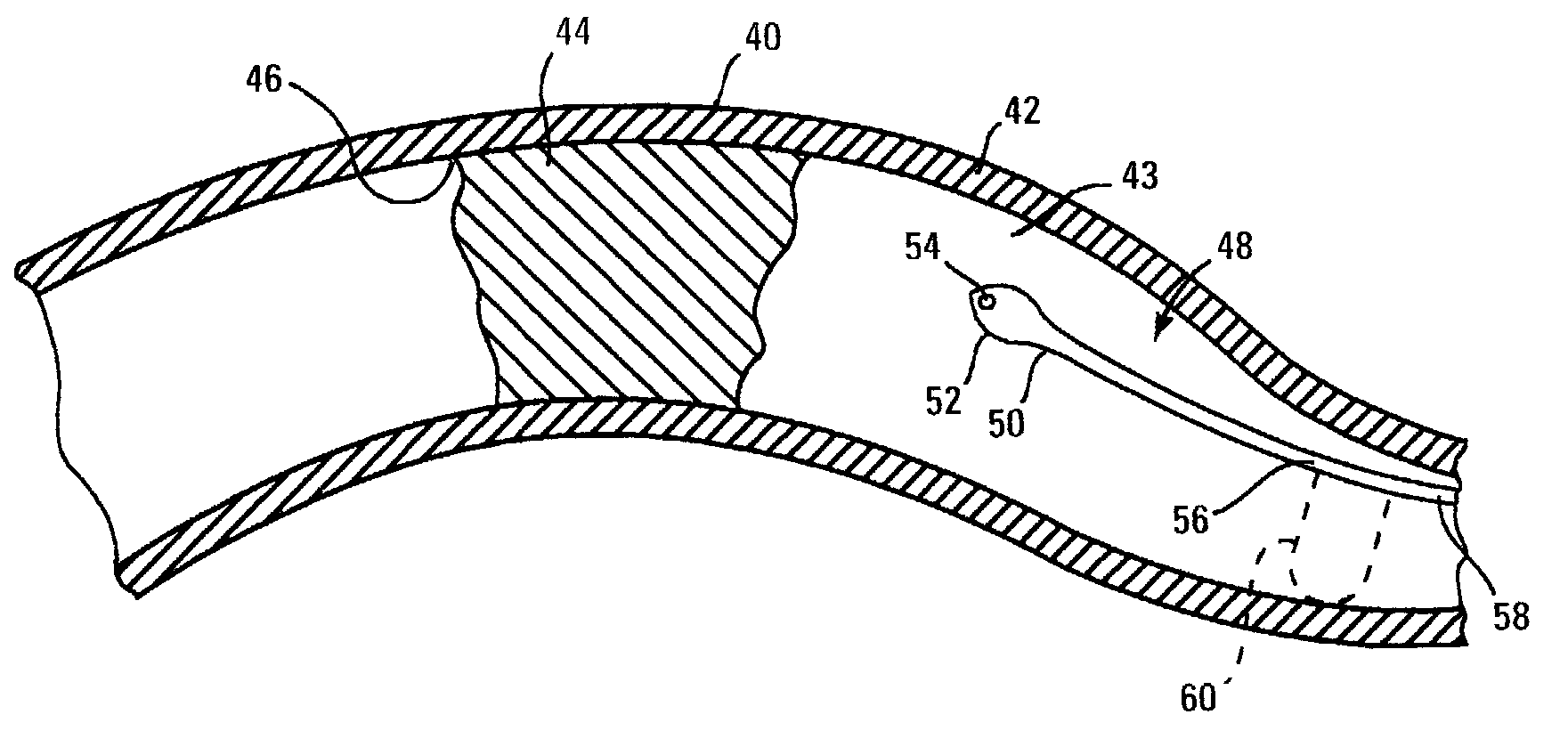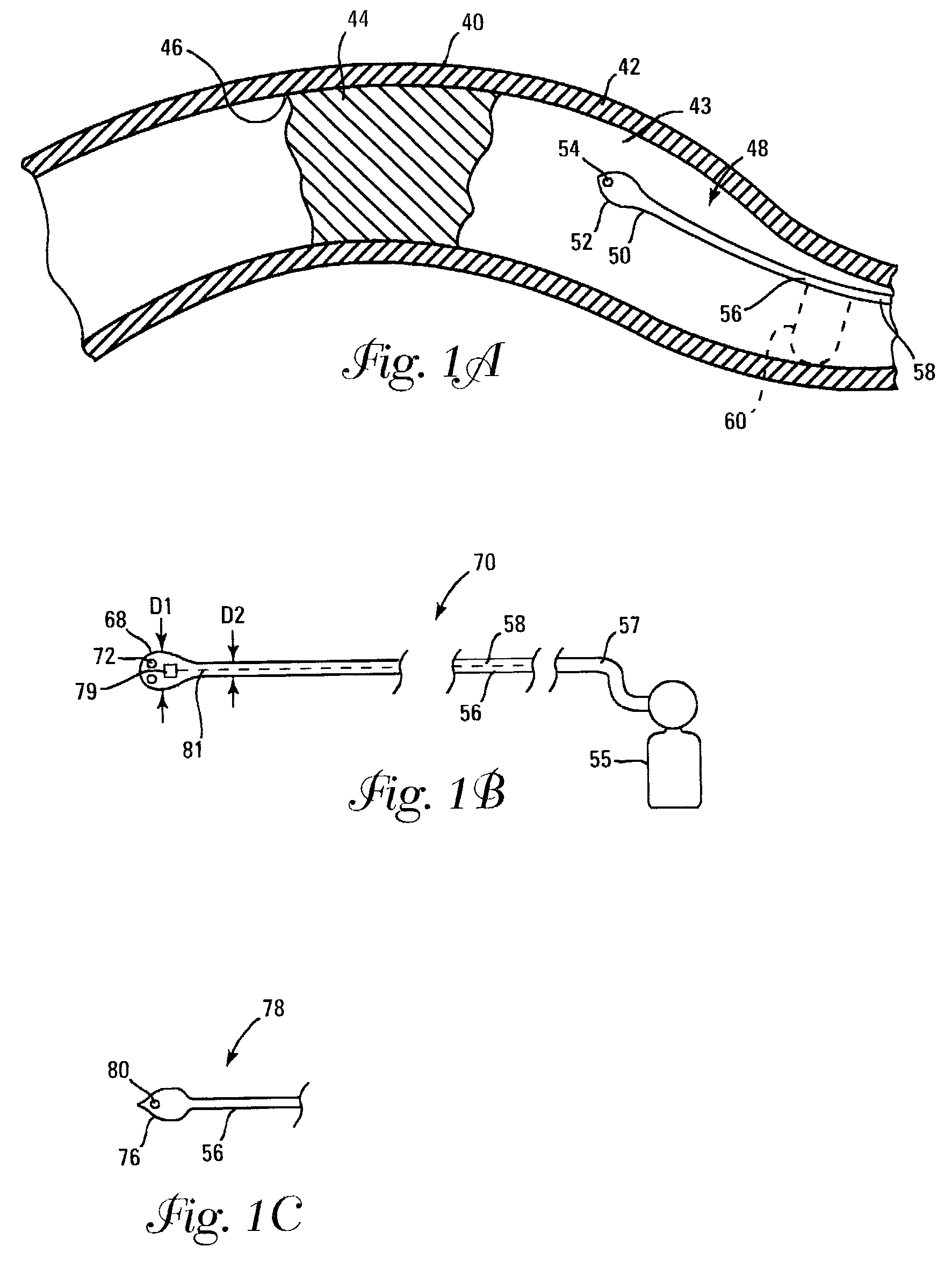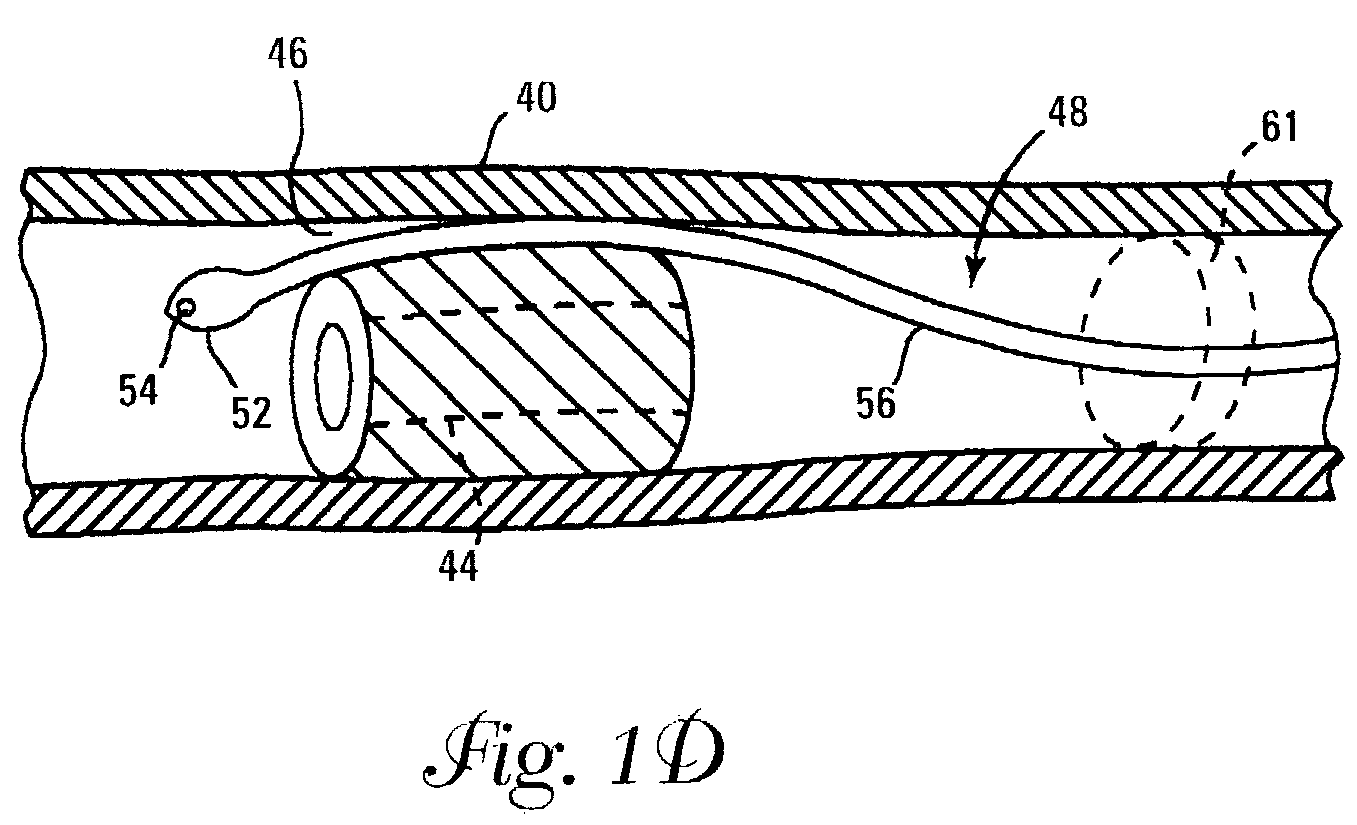Percutaneous transluminal endarterectomy
a transluminal endarterectomy and percutaneous technology, applied in the field of medical devices, can solve the problem of plaque separation along a plane of relative weakness
- Summary
- Abstract
- Description
- Claims
- Application Information
AI Technical Summary
Benefits of technology
Problems solved by technology
Method used
Image
Examples
Embodiment Construction
[0039]FIG. 1A illustrates a vessel 40 occluded by plaque 44 being approached by a carbon dioxide infusing catheter 48 having a bulbous distal head 52. Vessel 40 includes a vessel wall 42 and has plaque 44 attached to the vessel wall along an interface or separation plane 46. Catheter 48 has a distal region 50, a shaft 56, and a lumen 58 extending therethrough in fluid communication with a distal orifice 54. Catheter 48 can be formed of any suitable material, including metals and polymers. Some catheters are formed of Nitinol, while others are formed of stainless steel.
[0040]Catheter 48 may optionally be used with an occlusion device 60, shown in phantom in FIG. 1A. Occlusion device 60 may include an expandable or inflatable balloon or cuff. Occlusion device 60 may be configured to have a central orifice therethrough, disposed to allow passage of catheter 48 through the central orifice, followed by inflation, as illustrated by balloon 61 of FIG. 1D. In the embodiment illustrated in F...
PUM
 Login to View More
Login to View More Abstract
Description
Claims
Application Information
 Login to View More
Login to View More - R&D
- Intellectual Property
- Life Sciences
- Materials
- Tech Scout
- Unparalleled Data Quality
- Higher Quality Content
- 60% Fewer Hallucinations
Browse by: Latest US Patents, China's latest patents, Technical Efficacy Thesaurus, Application Domain, Technology Topic, Popular Technical Reports.
© 2025 PatSnap. All rights reserved.Legal|Privacy policy|Modern Slavery Act Transparency Statement|Sitemap|About US| Contact US: help@patsnap.com



